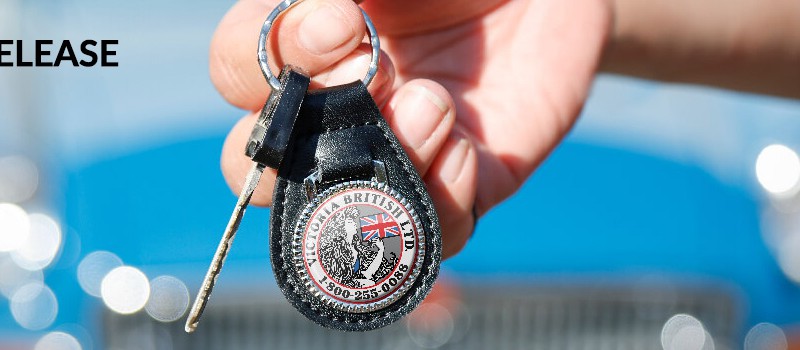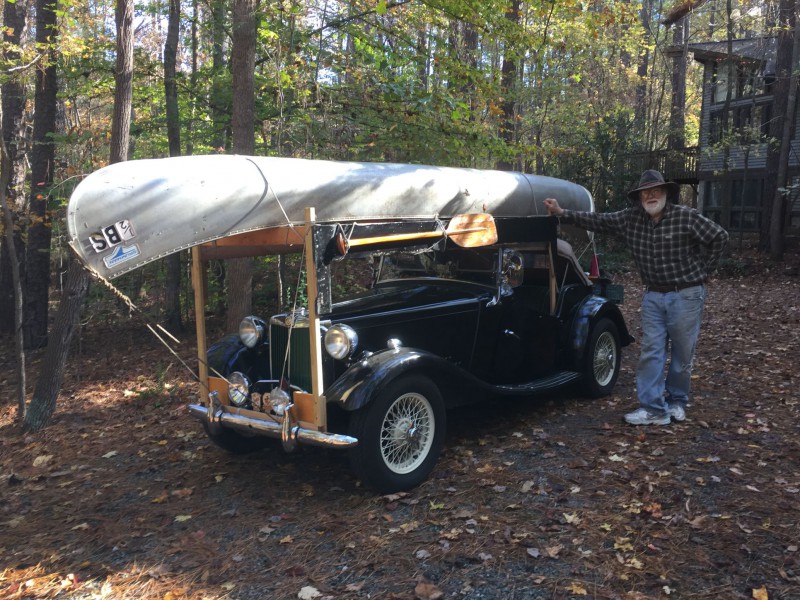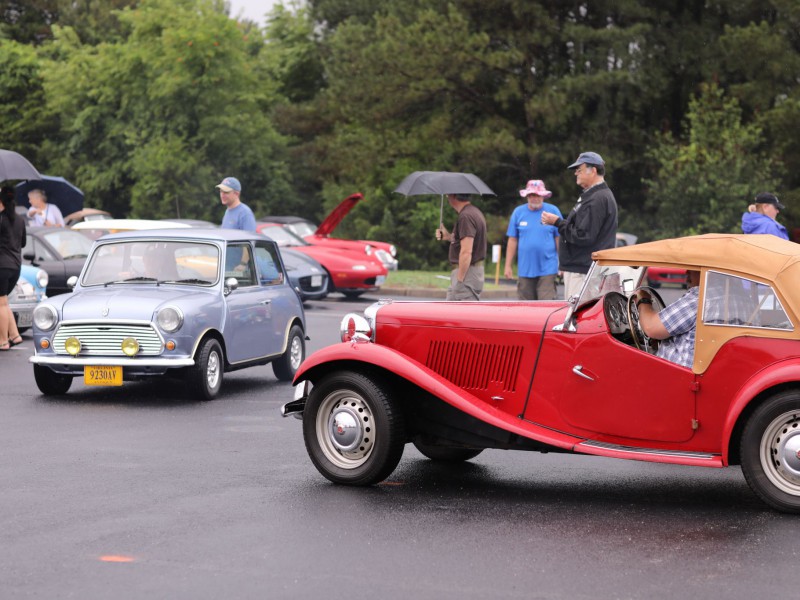“Of all sad words of tongue or pen, the saddest are these, ‘It might have been.” – John Greenleaf Whittier
The Swinging Sixties represented the high-water mark for the British automotive industry. The Jaguar E-Type – introduced in 1961 – was widely considered one of the best sports cars in the world and more affordable marques such as Austin-Healey, MG and Triumph found considerable sales success throughout the decade with models ranging from the Sprite, Spitfire and Midget to larger roadsters like the MGB, TR4/6 and the Big Healeys. Saloons varied in size from the diminutive Mini to the sporting XJ6 and found ready customers willing to buy British.
Despite the strong sales success there were storm clouds gathering on the horizon in the form of increasingly stringent Federal safety and pollution standards and greater competition from Japanese manufacturers like Datsun, Honda and Toyota. The largest threat was US legislators that were enacting rules that strangled performance and added weight – and hindered styling – for expensive safety modifications that the cars were never originally designed to comply.
MG and Triumph took different paths to meeting these challenges with Coventry choosing to adopt the larger 2.5-liter 6-cylinder engine that held performance steady despite the emissions controls while both the Midget and MGB accepted lower levels of performance as a consequence of the new requirements. Donald Healey, however, was adamantly opposed to the solution suggested by BMC – a badge engineered MGC – and sought instead to maintain a meaningful distinction compared to the Abingdon derived successor proposed by Longbridge management.
Healey considered the C-Series engine to be nearing obsolescence and sought an alternative that would provide better performance and preserve the marque’s upmarket image. Healey and his son Geoffrey sought to adapt the classic Coker designed body for use with the Rolls-Royce engine from the Vanden Plas Princess 4-litre R that debuted in 1964. The FB60 engine that piqued Healey’s interest resulted from the collaboration between BMC and Rolls-Royce which resulted in an all-aluminum powerplant of 239-ci producing 175bhp. Hydraulic valves and seven main bearings meant the engine was smooth, lightweight and durable and fitted in with the image that Healey had for the future of the model. The prodigious torque produced by the unit would result in much the same feel that had marked Big Healeys since the first 100 in 1953 and the Rolls-Royce name could have served as a powerful marketing tool. Surprisingly – or not if you have familiarity with Big Healeys – the FB60 engine was also lighter by some 100 pounds and was designed to run with a lower compression ratio.
Moreover, a twincam head was in development that could reach output figures approaching 300bhp – almost double the horsepower of the C-Series engine – and move the Healey firmly in competition with the more powerful Jaguar E-Type. To prove the validity of his Austin-Healey 4000 concept, Healey pulled a 1966 3000 into his Warwick facility and proceeded to cut the vehicle in down the centerline and added a 6-inch fillet to create additional width that would meet future US safety standards and allow fitment of the Princess R rear axle. Additional modifications were made to yield structural improvements and improve ride quality. The chassis was revised to accommodate the new engine and a Borg Warner Model 8 automatic transmission – a change that most considered was wanted by Americans – while the exterior remained largely unchanged except for improved venting and better lighting.
Befitting the Rolls-Royce engine under the hood, the interior was substantially improved with more comfortable seats and more luxurious appointments including armrests on the doors and elaborate door panels. Safety and comfort were improved – finally – with a collapsible steering column and more interior room for the front and rear occupants created by better front seats. Black crackle paint replaced the wood that debuted in the later 3000 series cars and the switchgear was changed to comply with DOT safety standards.
When driven, the new engine and wider track worked to convert the traditional hairy chested 3000 into a comfortable GT cruiser despite the fact that the new unit was predisposed to rev. Geoffrey Healey remembered that “it was a delightful engine, and would run up to high revs very easily if you didn’t watch it.” The automatic transmission matched well the personality of the engine and its availability as an option would doubtless have won the Austin-Healey 4000 many converts in the important American market.

To the untrained eye the proposed Austin-Healey 4000 still looked very much like its 3000 predecessor
With the prototype complete, the car was delivered to Longbridge for an audience with BMC management in February 1967. The Healeys were gratified to find that their work was received with rave reviews and a production order was placed for launch early the next year. Before that could happen, six pre-production cars were ordered – a pair for each of three transmissions; the Borg-Warner Automatic, the Jaguar 4-speed manual and the same unit fitted with overdrive. Austin identified these cars with the project number ADO24 and Syd Enever was tasked with supervision of the job. The modified chassis for these development mules were produced by John Thompson Motor Pressings with the bodies manufactured by long time supplier Jensen. To ensure the car’s timely completion, Rolls-Royce began adapting the 4-liter engine to US emissions standards and started work on developing an appropriate bell housing for the Jaguar manual transmissions.
Just months later, in April 1967, as two mules were almost finished (one with the manual and the other with the standard overdrive transmission) management ordered that no further prototypes would be necessary. Without further explanation, BMC then cancelled the entire project with the two pre-production cars not quite completed. According to Geoffrey Healey, “BMC was running out of money [and] in a very bad way … Unbeknown to us and to BMC, Rolls Royce had suspected that BMC wouldn’t he taking its full allocation of engines, and had got rid of a lot of tooling, so it wasn’t really in a position to start immediate production of the engine – certain critical castings weren’t available.”
No doubt the position of the car as a rival to Jaguar was also a factor that weighed against it as William Lyons wanted no internal competition for the E-Type and its eventual successor. The price of the Austin-Healey 4000 would have undercut its rival from Coventry and likely also poached customers from MG and Triumph seeking to stretch their budget for such an enviable product.

More luxurious than hairy chested, the Austin-Healey 4000 would have preserved the Austin-Healey name for a new decade
With one car finished – the first prototype 4000 – and two nearly so, plus four additional chassis, the project reached an ignominious end. The two almost finished cars were finished in slap-dash fashion to a middling standard. The 3 finished cars were sold off to various collectors and friends of Warwick where they have survived to the 21st century (one is located at the Healey museum in the Netherlands).
What could have been is a question that befuddles many British sports car enthusiasts but Austin-Healey’s demise is a regret that still haunts us today. John Greenleaf Whitter is right, it might have been just plain sucks.
Images courtesy of the Healey Museum, Storm Williams, British Motoring Journal and Classic and Sportscar.














'Powered by Rolls-Royce – Austin-Healey 4000' have 2 comments
April 12, 2021 @ 11:57 am andrew sneddon
I was lucky enough to see TNX at Donnington at a Healey meeting, and have several,photos of the car (complete with cracked screen!)
As a novice car restorer, I was subsequently offered a burnt out ‘sports car’. I collected the semi rolling remains from near Capel Curig in N Wales, but when looking at it closely back home although I recognised it as a Healey, found it had strange plates welded to the middle of the bulkheads, and sections welded into the middle sections of the chassis. There was not much to salvage from the remains, so I cut up the chassis, retained the front suspension units, two back wings and steering column, throwing away the rest, including a rather twisted big front bumper.
It was only months later I realised what I’d destroyed!!! Although I’d seen TNX complete with hood cover with a 6″ insert in the middle, I’d not made the connection.
I’m now hoping to rectify the situation some 40 yrs later, and am proposing to cut up a sad BJ8 and weld some strange plates to the bulkheads and centre sections of the chassis. I already have the running gear from Princess, just need a bit of time.!!!!
June 5, 2023 @ 9:05 am David Knowles
Well Andrew, what a story – how are developments two years on please? Do you by any remote chance recall the chassis number of that wreck?